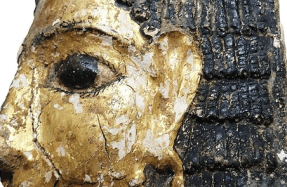POTTERY’S ORIGIN STORIES


UNTIL RECENTLY, MANY scholars believed that the earliest pottery was made some 9,000 years ago, when Neolithic peoples in the Near East first settled down permanently and turned to farming. Archaeologists thought that pots were initially used to cook cereals to make them more digestible or to ferment surplus grains so they could be stored for longer periods—as beer, for example. Pottery, archaeologists reasoned, increased farmers’ efficiency, enabling them to process large harvests and stock their cupboards against lean months. And because producing ceramics requires time and pots are themselves cumbersome objects, it was assumed that the transient lifestyles of huntergatherers were ill-suited to making pottery.
But archaeological discoveries have gradually chipped away at this consensus. Around 10 years ago, improvements in radiocarbon dating confirmed that the world’s oldest known pots were actually made around 20,000 years ago by people in southern China. “It’s remarkable, because this was during the last Ice Age and these people lived by hunting, gathering, and fishing, not farming,” says Oliver Craig, a bioarchaeologist at the University of York. In addition, sherds from pots made by hunter-gatherers who lived in Japan and the Russian Far East have recently been dated to the end of the glacial period, some 15,000 years ago. Other discoveries show that people living in Mali independently invented pottery 11,000 years ago. In the Americas, nomadic cultures in Brazil developed pottery as early as 8,000 years ago, and on the southeastern coast of North America, people first began making pots around 5,000 years ago. None of these early potters practiced agriculture, forcing archaeologists to rethink why people first began to use ceramic vessels.


The remnants of prehistoric meals left behind on potsherds may be key to answering this question. Craig is part of an international team of researchers who have been using
You’re reading a preview, subscribe to read more.
Start your free 30 days





